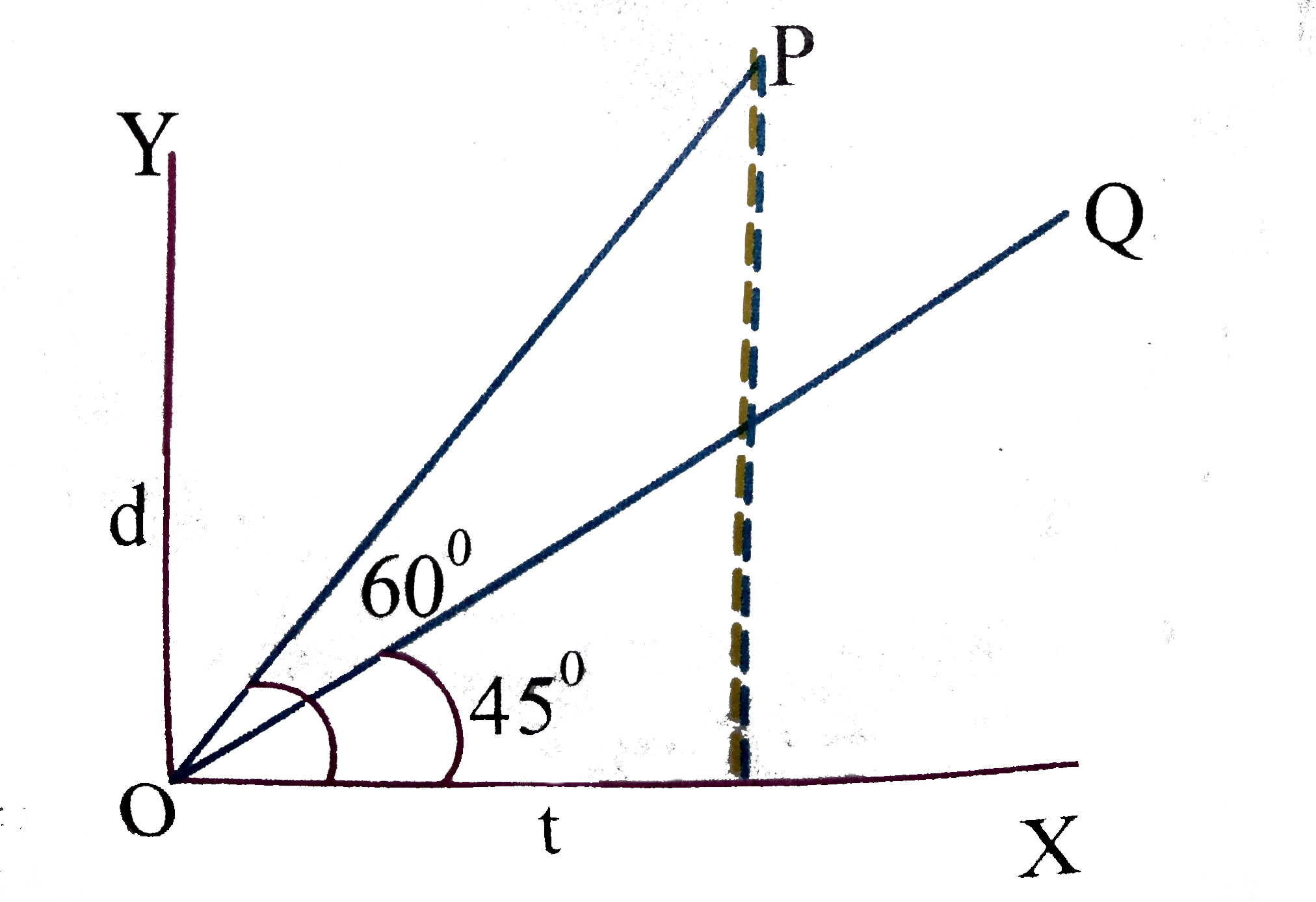
The displacement-time graphs of two bodies A and B are OP and OQ respectively. If ∠POX is 60∘ and ∠QOX is 45∘ the ratio of the velocity of A to that of B is
√3:√2
√3:1
1:√3
3:1
The correct Answer is:B
Step by step video & text solution for The displacement-time graphs of two bodies A and B are OP and OQ respectively. If anglePOX is 60^(@) and angleQOX is 45^(@) the ratio of the velocity of A to that of B is by Physics experts to help you in doubts & scoring excellent marks in Class 11 exams.
Updated on:21/07/2023Similar Questions
The displacement-time graph of two particles A and B are straight line making angle of 60∘ and 45∘ with x-axis respectively. Then find the ratio of velocity of A and velocity of B.
View SolutionCompletion type Question : The displacement time graphs for two particles A and B are straight lines inclined at angles of 30∘ and 45∘ with the time axis. The ratio of their velocities vA:vB = ………..
View Solution
Knowledge Check
The displacement-time graph for two particles A and B are straight lines inclined at angles of 30∘ and 60∘ with the time axis. The ratio of velocities of VA:VB is
A1:2B1:√3C√3:1D1:3The displacement-time graph for two particle A and B are straight lines inclined at angles of 45∘and 60∘ with the time axis. The ratio of velocities of vA and vB is
A1:2B1:√3C√3:1D2:1The displacement-time graph for two particles A and B are straight lines inclined at angles of 30∘ and 60∘ with the time axis. The ratio of velocities of VA:VB is
A1:2B1:√3C√3:1D1:3
Displacement - time graph of a body projected vertically up is
View SolutionThe displacement-time graph for two particles is as shown. Find the ratio of their velocities.
View SolutionDisplacement-time graph of a body projected vertically up is
View SolutionThe displacement-time graph for two particle A and B straight lines inclined at angle of 30∘ and 90∘ with the time axis. The ratio of the velocities VA and VB is :

View SolutionThe displacement time graphs of two bodies A and B are shown in figure. The ratio of velocity of A to velocity of B,vA/vB is:

View Solution
